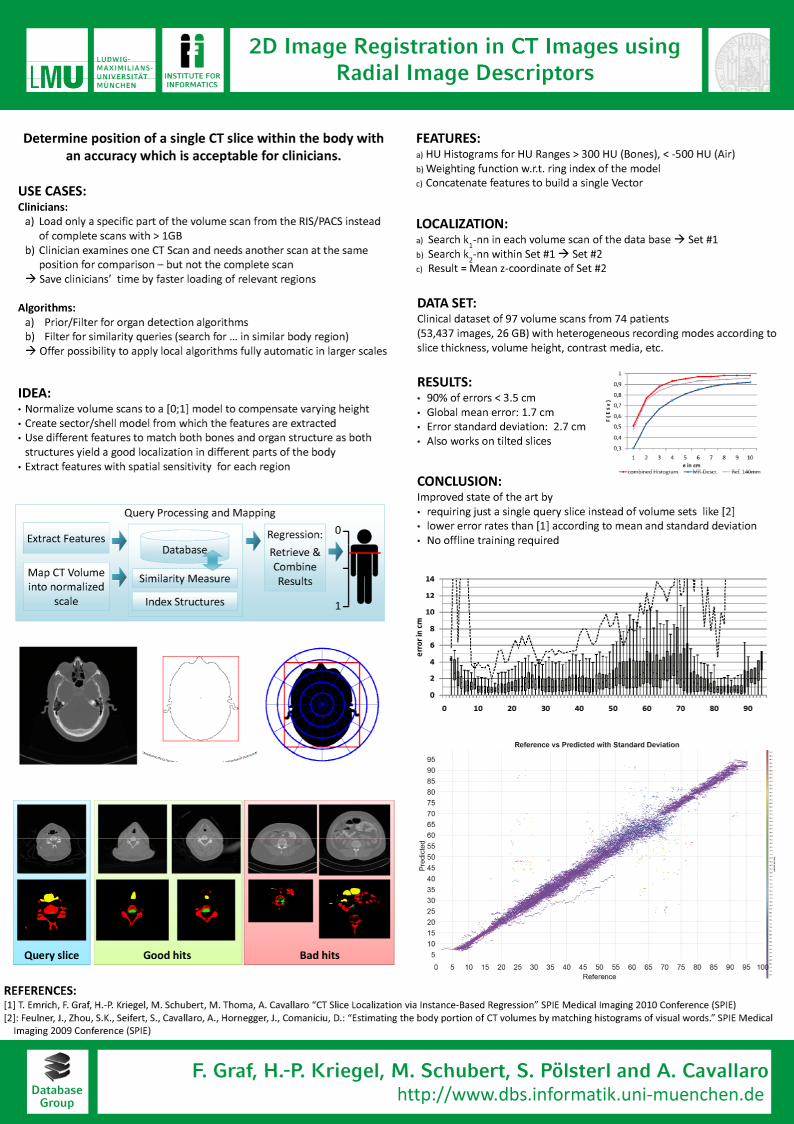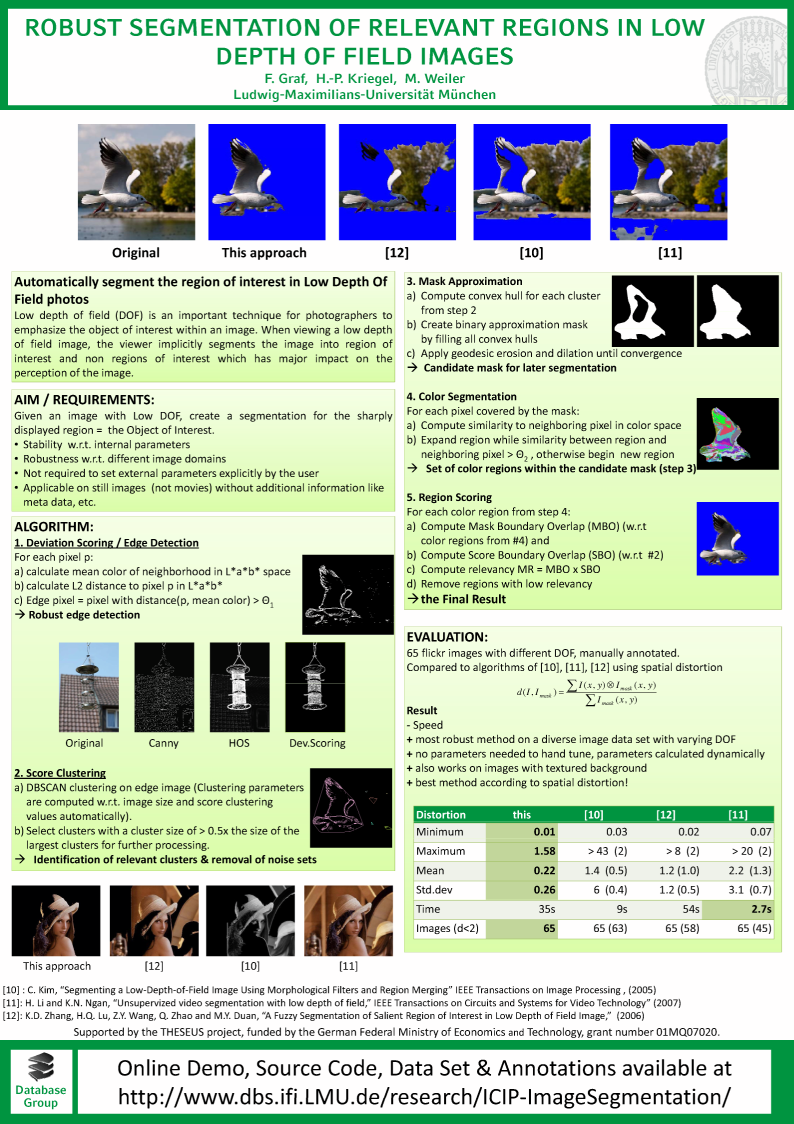We got another demo accepted:
Knowing: A Generic Data Analysis Application
Thomas Bernecker, Franz Graf, Hans-Peter Kriegel, Nepomuk Seiler, Christoph Türmer, Dieter Dill
To appear at 15th International Conference on Extending Database Technology (2012)
March 27-30, 2012, Berlin, Germany
Abstract:
Extracting knowledge from data is, in most cases, not restricted to the analysis itself but accompanied by preparation and post-processing steps. Handling data coming directly from the source, e.g. a sensor, often requires preconditioning like parsing and removing irrelevant information before data mining algorithms can be applied to analyze the data. Stand-alone data mining frameworks in general do not provide such components since they require a specified input data format. Furthermore, they are often restricted to the available algorithms or a rapid integration of new algorithms for the purpose of quick testing is not possible. To address this shortcoming, we present the data analysis framework Knowing, which is easily extendible with additional algorithms by using an OSGi compliant architecture. In this demonstration, we apply the Knowing framework to a medical monitoring system recording physical activity. We use the data of 3D accelerometers to detect activities and perform data mining techniques and motion detection to classify and evaluate the quality and amount of physical activities. In the presented use case, patients and physicians can analyze the daily activity processes and perform long term data analysis by using an aggregated view of the results of the data mining process. Developers can integrate and evaluate newly developed algorithms and methods for data mining on the recorded database.
BibTex
@INPROCEEDINGS{BerGraKriSeietal12,
AUTHOR = {T. Bernecker and F. Graf and H.-P. Kriegel and N. Seiler and C. Tuermer and D. Dill},
TITLE = {Knowing: A Generic Data Analysis Application},
BOOKTITLE = {Proceedings of the 15th International Conference on Extending Database Technology (EDBT), Berlin, Germany},
YEAR = {2012}
}
More informations will be published at the official publication site at the LMU.

